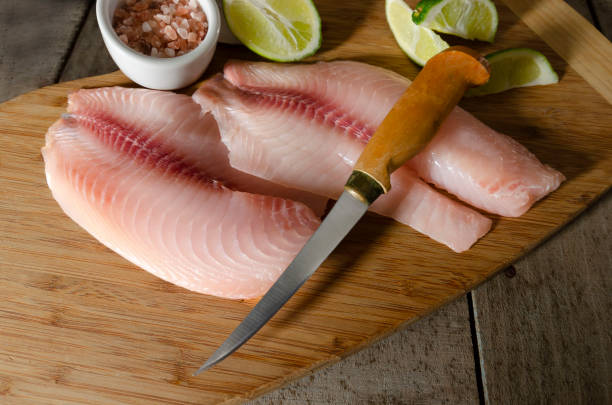If you and your family love having fish in your daily meals, you must know the importance of a sharp filleting knife. And sharpening a fillet knife might have given you a hard time. Imagine yourself on a camping sight, making fish fillets and deboning fish, but then realizing that all you have is a blunt knife. Or even cutting and deboning fish at home with a dull knife and not knowing how to sharpen a fillet knife.
No one can achieve a perfect boneless fish fillet with blunt-edged fillet knives because deboning needs a very sharp fillet cutting knife, but still, no worries. It would be best to have some sharpening supplies, and you are good to go. We will inform you how to sharpen a stainless steel fillet knife and how to sharpen an electric fillet knife to help you cook whenever you want.
Related Post: Best Fillet knife
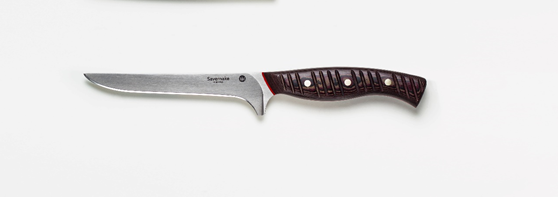
How to Sharpen a Stainless Steel Fillet Knife
There are many ways and products that you can use to sharpen a fillet knife. Following are the best methods and products you can use for sharpening a fillet knife,
Related Post: Best Fillet Knife Sharpener
1. Sharpening Stones
The most common and traditional way to sharpen fillet knives is by using sharpening stones. There are very few chances of getting hurt when sharpening with fillet knife sharpening stones, making them user-friendly. Sharpening stones are long-lasting and come in two types; Whetstones and oilstones.
1.1 Using Whetstone
Whetstones come with fine, medium, and coarse grit surfaces. The coarse grit helps remove the blunt material from the knife, and the fine grit helps make the edge smooth. You can use both to get a flawless edge, but we recommend using a medium grit.

Here is how to sharpen a fillet knife with a whetstone,
- Firstly, immerse the whetstone for 20-30 minutes in water. It is an essential step as soaking help in sliding the knife smoothly; otherwise, you might cut yourself while sharpening. You can omit the soaking step with a “Splash and Go” fillet knife sharpener.
- After soaking, hold the knife in your dominant hand at a 30 to 40 degrees angle and place three fingers of your other hand on the flat surface of the filleting knife.
- Place the tip of the knife on the stone and apply slight pressure with your fingers.
- Now, start sliding the knife from the tip edge to the end. Fillet knives are softer than other knives (if we sharpen from the heel, the tip might get missed or unsharpened). So, we recommend sharpening from the tip then to the heel. Do not slip the knife backward and forward and only slip it in one direction.
- Repeat this step 10-15 times.
- Turn the knife, and repeat the same method on the other side.
- Now, even out the edges with honing steel (when using a medium grit) or fine grit (when using coarse grit).
You can buy an amazing whetstone at a reasonable price from Amazon
1.2 Using Oilstone
Using oilstone to sharpen a fillet knife is even simpler than using a whetstone. Here is how to sharpen a fillet knife with an oilstone,
First, you have to lubricate the fillet knife sharpening stone to make the sharpening process smoother. You can use soapy water, mineral oil, and baby oil to lubricate the stone.
- After lubrication, follow the same method as whetstone from the second step.
- When sharpening a fillet knife, use a consistent angle and push in only one direction.
- Wash your knife, and it is ready to slice off any fish that comes in its way.
2. Using a Honing Rod
Honing rod or sharpening rod is not actually a fillet knife sharpener but a polishing or an edge smoothing tool. Here’s how to use it:
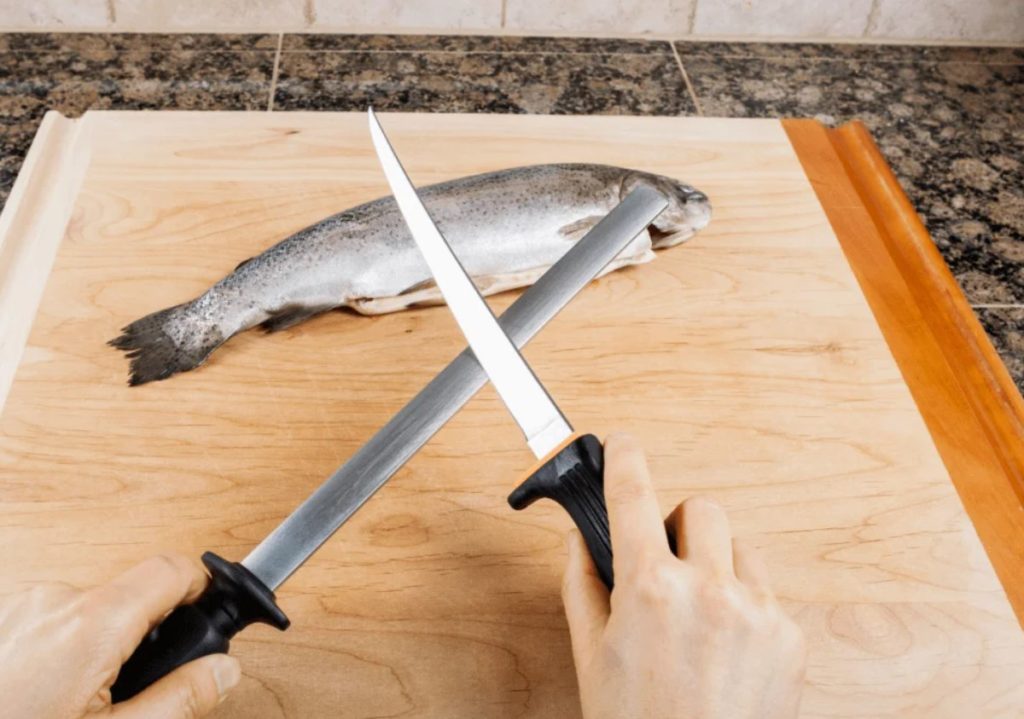
- Fold a cloth, put it on a flat surface, and place the honing rod on it with its handle facing the roof.
- Now, hold the knife with your dominant hand and keep the rod in your firm grip so that it will not move.
- Start sliding at a fillet knife sharpening angle of 20 degrees with a slow twisting motion from tip to the heel.
- Repeat this step at least ten times on both sides, and you are all set.
You can also watch the method to hone or sharpen a filleting knife here:
Honing rods do not trim or scrap off any material from the knives; they just make the surface and edges smoother, which helps sharpen filleting knives. Repeat the process now and then, especially before and after using the knife. You can use the same method for honing after using a fillet knife sharpening stone.
3. Electric Fillet Knife Sharpener
Electric sharpeners are the safest and most convenient option to sharpen fillet knives. You don’t have to look for a honing rod when you have an electric knife sharpener by your side because it comes with both sharpening and honing spaces.
Hold the electric fillet knife and start dragging or sliding it through the sharpening space; make this move at least 8 to 10 times. Now, use the honing spot and pull the fillet knife through it a few times. This process will take less than 5 minutes, and your dull knife is now exactly like a new sharp-edged filleting knife. If you buy an electric fillet knife sharpener, make sure it has both honing and sharpening spots like this electric sharpener.
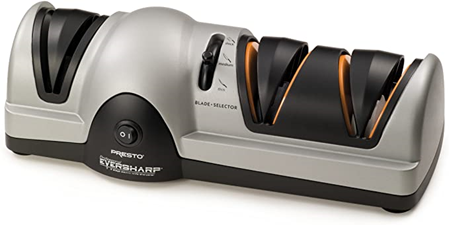
3.1 How to Sharpen Electric Fish Fillet Knife?
If you are looking for the answer to how to sharpen an electric fillet knife, you must have one or will buy one. You can also check this incredible electric filleting knife from here. Sharpening electric fish filleting knives is no big deal; you only have to be careful when sharpening or even using them.

Take an electric fillet knife sharpener and sharpen the two blades separately. Make sure the knife is turned off and separate the blades. Now hold the knife with a firm grip from the blunt end, pointing the knife’s tip on your opposite side. Now start pulling the knife slowly and carefully through the sharpening spot of the sharpener. Repeat it depending on the sharpness you want to acquire. Apply the same method for the second blade, and here you have a precisely sharpened electric fish filleting knife.
Related Article: Using a Knife: Master Basic Skills
4. Manual Fillet Knife Sharpener
A manual sharpener is a handheld alternative to an electric fillet knife sharpener. It is a safer option for you if you are a beginner because it has a safe space for fingers and the blades are far from it. Here is how to sharpen a fillet knife with a manual sharpener,
- Place the manual fillet knife sharpener on an even side, and fold your fingers around the handle for better grip.
- Using the other hand, start running the knife through the coarse side and run it a few times.
- Now, slide the filleting knife through the fine stage (for honing).
- Clean the knife with a wet towel, and your knife is prepared to chop off the fish and make ideal fillets.
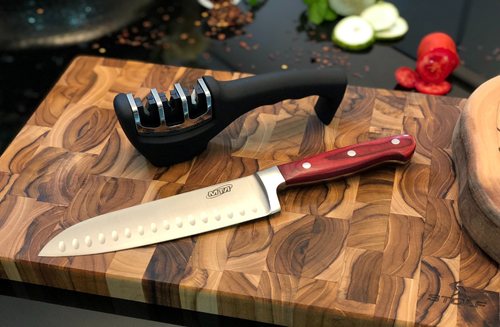
5. How to Sharpen a Fillet Knife without a Sharpener?
What if you are somewhere where you don’t have access to a fillet knife sharpener? That’s a real problem, but don’t worry; we will tell you how to sharpen a fillet knife without a sharpener,
- You must have a ceramic mug lying in the kitchen that can save your fillet knives at this time. Slide the knife on the flat but dull bottom of the ceramic mug with a constant one-direction motion. Sharpen both sides of the blade following the same trick. This method will surely get you the desired sharpness in a few minutes.
- A nail file, yes, a nail file can help you sharpen your fillet knives. The fine grit surface of the nail file will give a result like a honing rod or a fine-grit whetstone to your filleting knife. Place the file on a firm surface and use the same method and angle used with fillet knife sharpening stones.
You can watch some more methods to sharpen filleting knives without a sharpener from here:
Best Angle to Sharpen a Fillet Knife
The fillet knife sharpening angle usually depends on the product to sharpen a fillet knife. For example, with a sharpening/honing rod, we use a 20 degrees angle, and with a fillet knife sharpening stone or without any fillet knife sharpener, we use an angle between 30-40 degrees. And that means the best angle to sharpen a fillet knife ranges between 20 to 40 degrees.
Related Guides on Fillet Knives:
Conclusion
We suggested to you the best ways and products to sharpen fillet knives, and you must have got the answer for how to sharpen a fillet knife now. You can use any product to sharpen a filleting knife considering your safety and suitability. Your safety is our preference, and we suggest you keep your fingers folded and away from the blade to avoid any damage. Clean and hone your fillet knives regularly to keep them in form, and use even pressure and consistent angle to get the best results in lesser time.
Sharpen it! Use it!
Enjoy your fish fillets!

